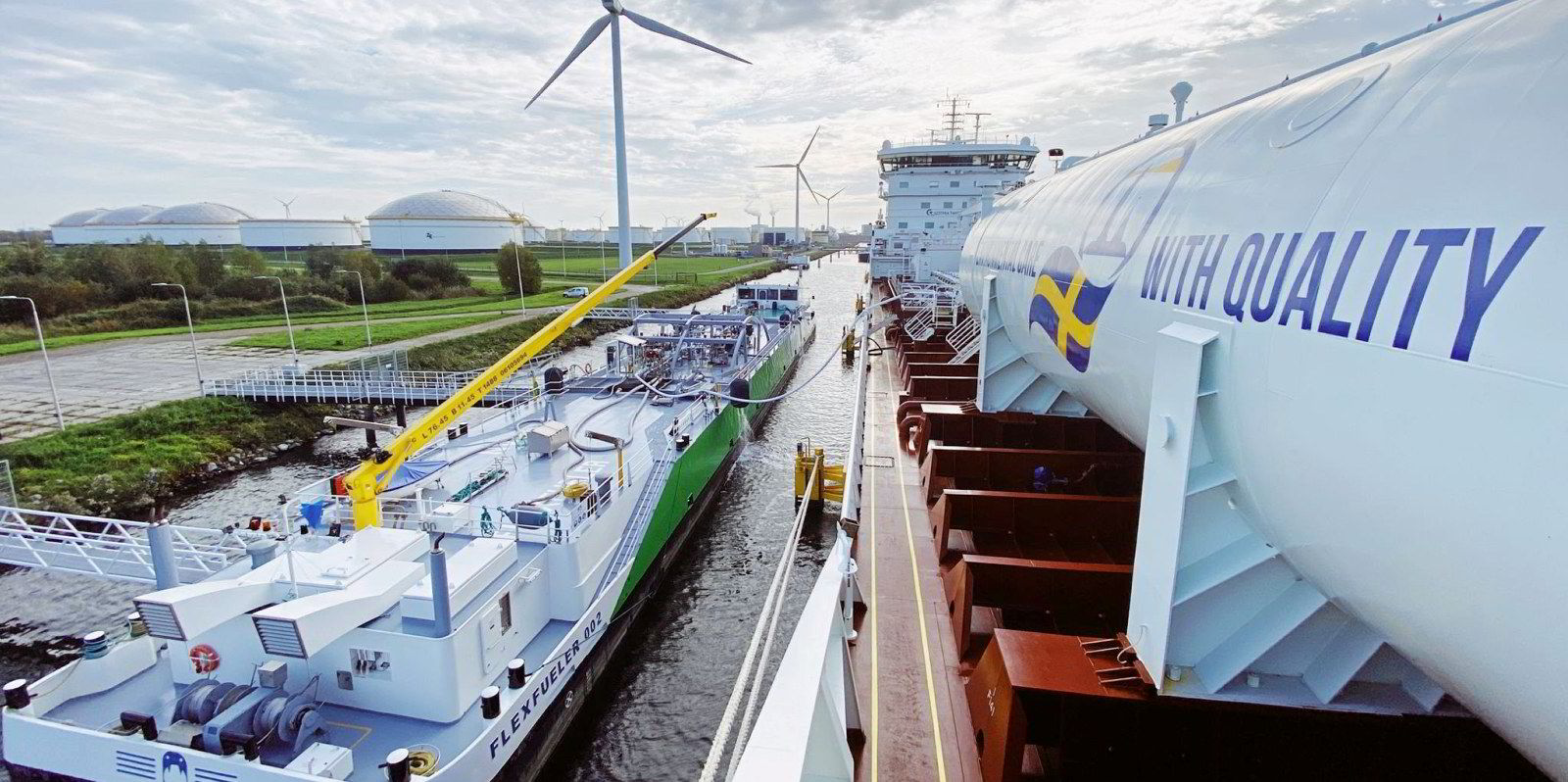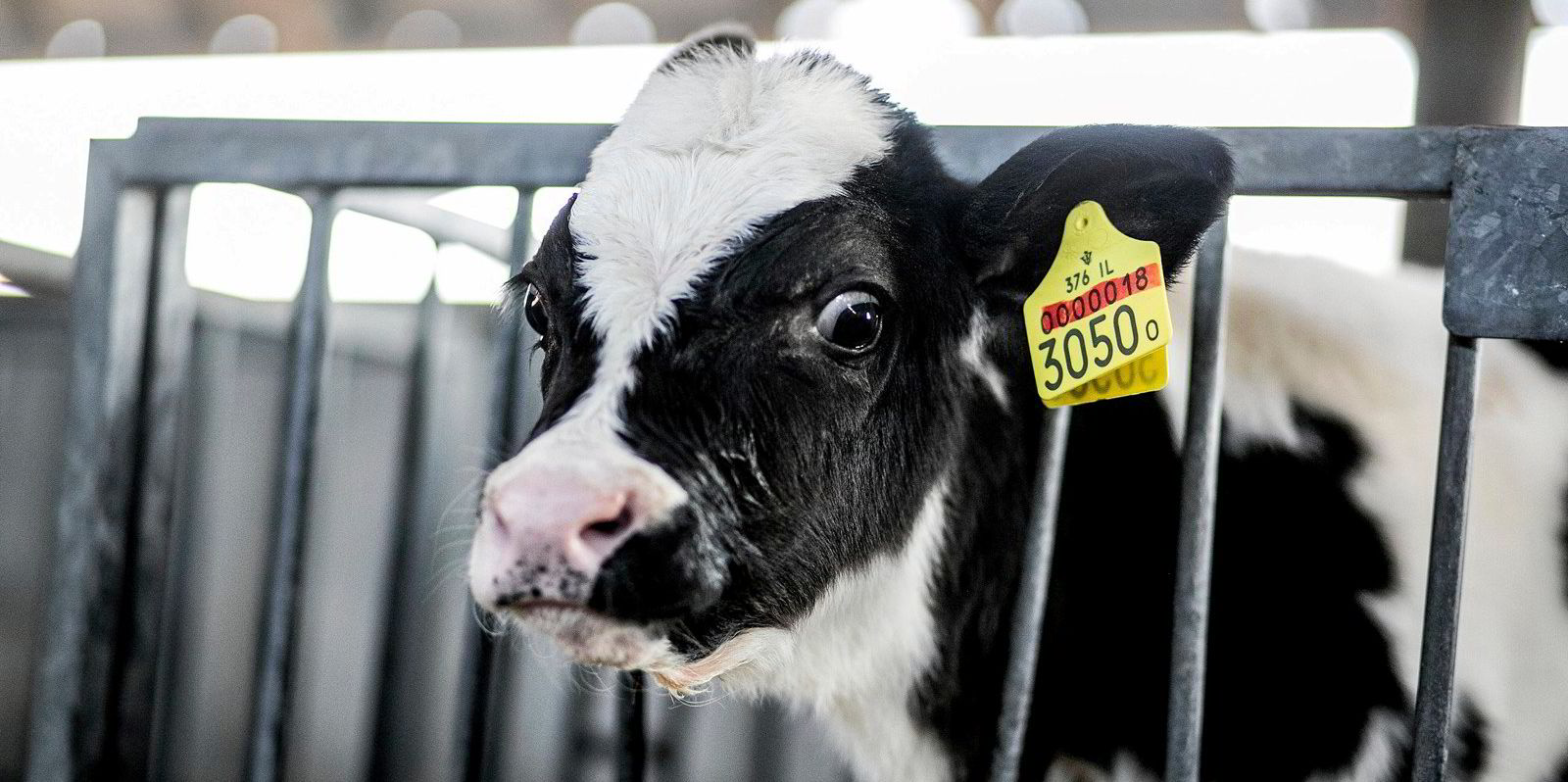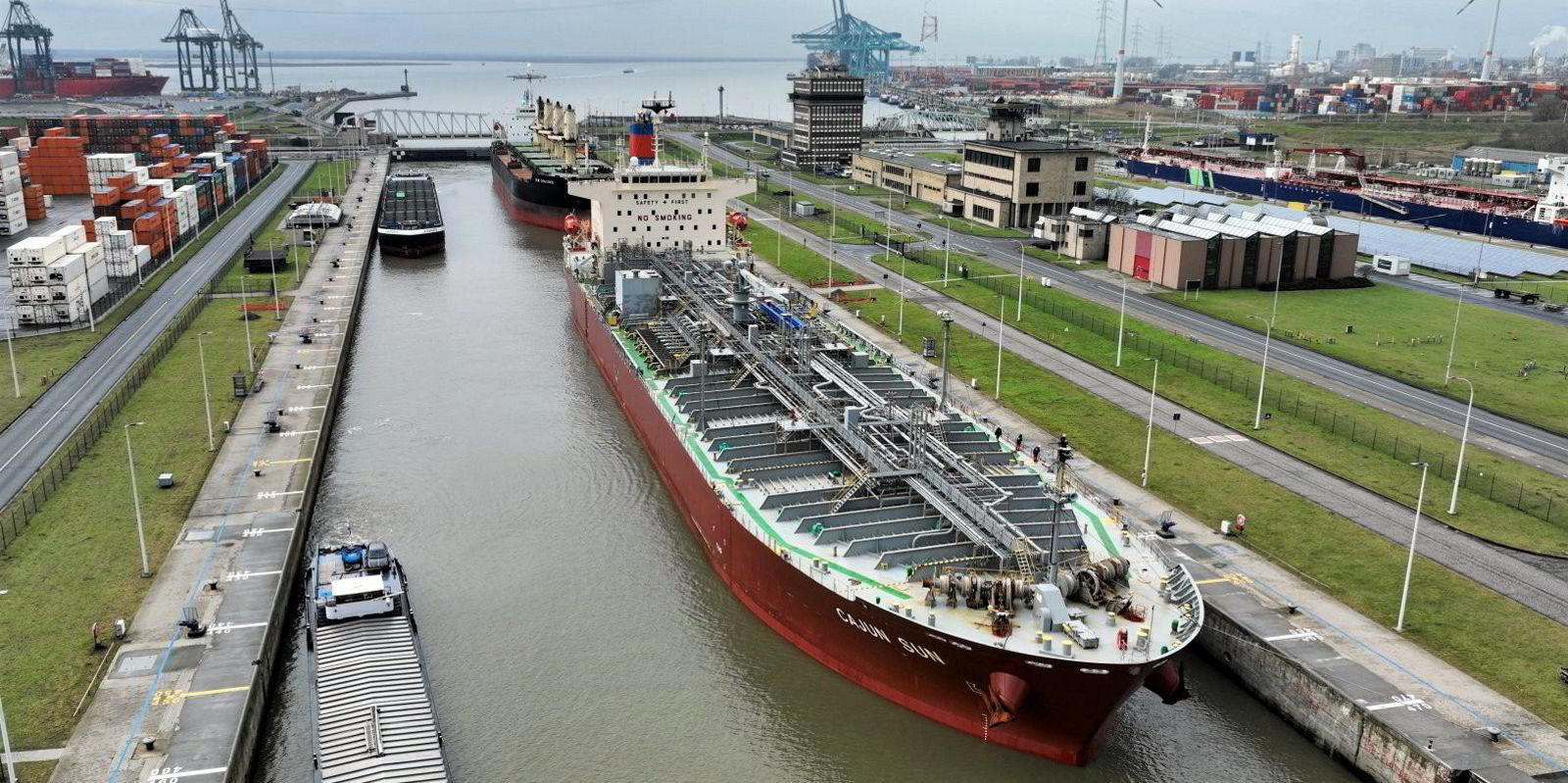Ask SEA-LNG chairman Peter Keller about where the focus lies for this pro-LNG industry coalition in 2022 and he has a three-word answer — “bio, bio, bio”.
While working towards long-term decarbonisation targets, the shipping industry must first hit those for 2030, Keller said, and to do that it needs to start integrating bio-LNG into the mix.
SEA-LNG chief operating officer Steve Esau stressed the importance of showing the reality of what is already available or under development on bio-LNG, which is also referred to as liquefied bio-methane.
Esau said there are around 30 million tonnes per annum of bio-methane being produced globally with the potential to scale this up.
He contrasted this with other fuel alternatives, such as methanol or ammonia, where the quantities are very small or non-existent.
“LNG bio-blend bunkers are already commercially available in north-west Europe,” he said.
“This area is incentivising the growth in production of bio-methane and building out a certification scheme, which means the industry can scale and makes that resource more accessible to maritime.”
Esau highlighted Dutch fuel provider Titan’s planned 200,000-tonnes-per-annum bio-methane liquefaction plant in the Port of Amsterdam.
Pathway forward
SEA-LNG has said that if blended as a 10% drop-in fuel with LNG, the output of this plant could allow almost 50 container ships of 14,000 teu to be compliant with the FuelEU Maritime’s decarbonisation trajectory for 2040.
“It’s about showing the reality of what is happening,” Esau said. “Our frustration is that the debate sometimes gets quite conceptual.”
Keller said SEA-LNG will be working with some partners this year to quantify better the amount of bio-LNG available and under development on a global basis.
There is also a hint about upcoming developments on the production of synthetic or e-methane, with talk that SEA-LNG members are looking at “big investments” in this space.
Both Keller and Esau acknowledged that LNG as a marine fuel took something of a beating in 2022, with the record price rises pushing owners of dual-fuel vessels over to burn very low-sulphur fuel oil (VLSFO).
Keller does not think it has killed interest in LNG as a fuelling alternative.
“We have always looked at LNG as a supply chain from the molecules to the end user,” Keller said, adding that the industry needs to look beyond simply the production of alternative green fuel molecules and assess the access to renewables and hydrogen production along with delivering volumes to consumers.
“Certainly LNG is not a green alternative but it moves you down the path and it gets you well ahead of those alternatives,” Keller said.
One of “those alternatives” is methanol, which is seeing something of an uptick in uptake by shipowners ordering newbuildings in 2023.
Keller insists SEA-LNG has always talked about the need for “a basket of fuels”.
He said the choice of methanol is a natural consequence of there being so many unknowns and a reflection of big shipowners like CMA CGM and MSC Mediterranean Shipping Company not wanting to put all their eggs in one basket.

Esau — who urged scrutiny of the green methanol supply agreements AP Moller-Maersk has said it has in place for its first methanol dual-fuelled container ship — spelt out the practicalities.
While fossil LNG, offers up to 23% greenhouse gas emissions reductions compared to VLSFO when measured on a full life-cycle well-to-wake basis, its grey methanol equivalent produces 14% higher GHG emissions over VLSFO.
To achieve the same emissions performance as LNG would require a 30% green methanol blend, Esau said, adding that not only would the fossil methanol base be more pricey than LNG but the blended volumes on top would be “very expensive”.
Keller also questions where the supply chain is for methanol and how long it will take to build out, whereas that for LNG bunkers is already in place and growing.
Safety at sea
The SEA-LNG chairman also raised “grave concerns” over seafarer safety on using ammonia as a marine fuel and said the sourcing of feedstock for the production will be another hurdle.
There are still issues to be tackled for LNG-fuelling.
Keller said the business needs more LNG bunker vessels to serve the newbuildings ordered.
He and Esau also see a need to bridge the gap between LNG suppliers, who may traditionally have been used to signing long-term contracts, and the more spot-orientated bunker buyers so the cost and risks of supply can be balanced out.
- Bio-LNG is considered nearly carbon-neutral because it is produced from organic waste flows, such as organic household and industrial waste, manure and sewage sludge.
- Synthetic LNG or e-LNG is renewable when e-methane is produced using renewable electricity and CO2, either from the air or renewable biomass.
- Both are identical to fossil LNG but are considered renewable as their upstream CO2 inputs make them carbon neutral on a well-to-wake basis.






